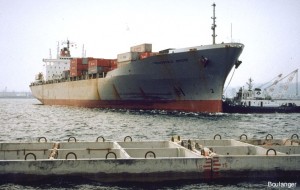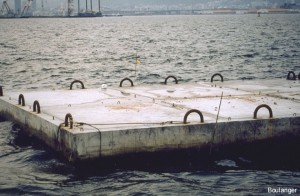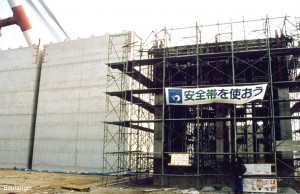Caisson Quay Walls in Japan
These photos of quay (“key”) wall construction at Port and Rokko Islands, Japan, were taken in 1996 during reconstruction efforts after the 1995 Hygoken-Nanbu (Kobe) earthquake.
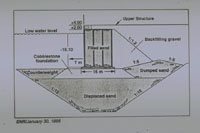
This cross-section shows a typical quay wall design. The quay wall acts primarily as a large gravity wall retaining the artificial island on one side. Large ships can then dock alongside the quay walls for loading and unloading of goods and materials.
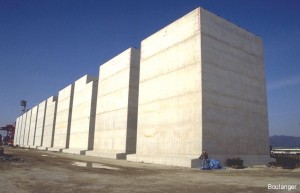
These quay wall segments are 17 meters tall, and are arranged along the island’s edge prior to their placement below water.
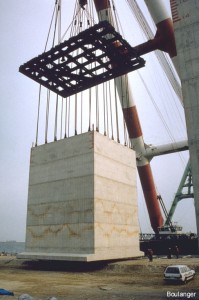
An offshore barge is used to lift each segment. The lifting cables pass through the guide-template so that the cables can act vertically (i.e., no inclination) on the quay wall segment.
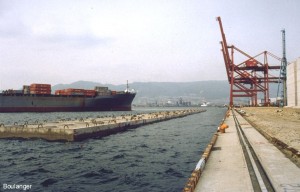
A row of quay wall segments has been placed just outside the existing “damaged” quay wall. Later, the space between the old and new walls will be infilled with soil, and the cargo cranes (in the background) will be relocated onto the new quay wall.

